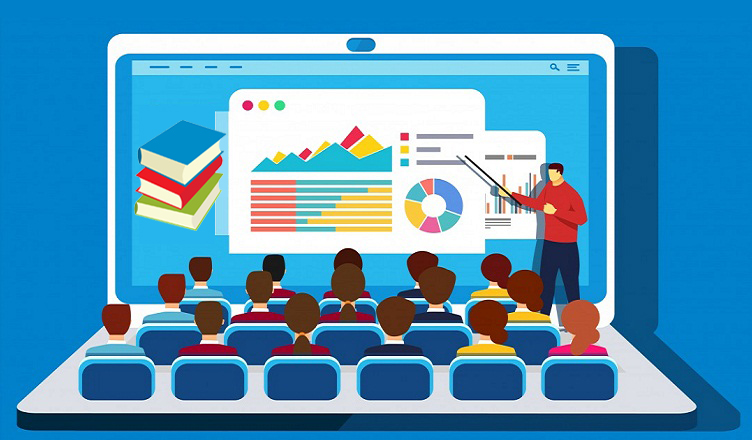Is technology in the classroom a threat or an opportunity?
Techssocial | We have seen how the arrival of technology has affected our lifestyle, the way we inform or consume and how it has transformed many sectors, even the most traditional ones.
Even so, most schools have not introduced many new technologies in terms of technology.
Some digital and technological resources have been incorporated into the educational centers, but the full potential that this brings is not being used. Many centers, teachers and parents do not fully trust that it is a good idea WritingCheap. They are assailed by the question of whether technology in the classroom is positive or negative.
Every time there are more centers that bet on the use of technology as a complement to traditional teaching, it is undoubtedly an upward trend. It is true that it poses important challenges such as possible distractions or the fear of accessing inappropriate content, but there are more opportunities that this trend offers us. 88.4% of Spanish children aged 10 use computers and 88.8% use the Internet, data that suggests that their use is already a majority before that age.
They are digital natives and are accustomed to the use of technology, so … why could not they use apps or mobile devices with an educational purpose? In this article, I will explain a few reasons why the introduction of technology in the classroom is a growing trend and the benefits that this entails.
5 benefits of technology in the classroom
- Union of the best of traditional and modern resources
A ‘blended learning’ teaching system, also known as a mixed teaching of traditional and technological resources, makes it possible to unite the best of both worlds. Technology should not be a substitute for traditional teaching but rather a complement. It is about uniting the best of the class, such as the unparalleled impact of the teacher, space or interaction with colleagues, along with the best of the digital universe that opens beyond the classroom, such as color, multimedia experience, and content. Unlimited to everyone’s reach.
In those schools that have more limited resources, the use of technology and the Internet gives them the opportunity to access infinite content available to all students. Access to technology in the classroom helps close the digital divide and allows learning opportunities to be available to everyone; what we can call ‘the democratization of education’.
- Development of personal skills

There are many ways to introduce technology in the classroom. For example, the use of tablets on a daily basis, using the computer and the Internet for certain subject activities, viewing online content … Each resource is designed for a specific activity but all promote the development of skills in common. For example, the fact of providing a tablet to the children and accessing the didactic content on their own, allows the children to develop autonomy and self-confidence since they do not depend on constant supervision; the guide will remain the teacher but the children will have the opportunity to explore independently following their instructions.
Another example would be the abilities they learn to function in a digital environment, an essential requirement for the future, such as finding the necessary information effectively in online search engines or knowing the use of different technological tools.
- Adaptation
There are many technological educational programs that have programmed Artificial Intelligence and resources based on machine learning to adapt the lesson at every moment to the level of the children. The most innovative applications and platforms use this system, adapting the content dynamically.
Thus, as the child plays and as he goes right or wrong, the algorithm re-adapts the content of the course to his level. The fact of using an adaptive technology that adjusts to the achievements of each student, allows them to feel part of real learning, so that progress is made as they learn.
- Motivation and play
The learning of new content has its hard part, such as having to strive daily, retain information that many times do not like or is not so interesting, but it is time to change the rules. It is demonstrated that motivation and illusion encourage children to learn in a more effective way, and what better way to achieve it through games. For children, as for adults, the best way to learn is through play. This takes them out of their routine, makes them activate the mind and their creativity and increases their participatory capacity.
The YouTube channels, mobile applications or online courses and the use of mechanics and game dynamics in non-lively environments, are able to enhance motivation and reinforce behavior to solve problems. Technology must show that learning is fun and that children do not take it as a punishment or obligation.
- Greater retention of knowledge
When something surprises you, it produces emotion and makes you laugh, it is easier to remember. Therefore, those activities that involve an active participation of the child as interactive experiences, tend to achieve a higher degree of retention in learning. The use of cartoons to explain or introduce lessons is a good resource as well since they give representations of the world with which the children are familiar, relate it to moments of fun and in this way it is possible to retain more attention.
Being a pleasant and attractive content for the child, it is easy to avoid distractions, because you will feel learning as just another game. The resources that prioritize the ‘learning by doing’ over other more passive procedures such as individual memorization are more effective in the retention of concepts and acquisition and improvement of knowledge.
Sagar is HR at techssocial.net. He has been writing last 3 years on different blogging sites. He has also helped small businesses to gain their ranking.
